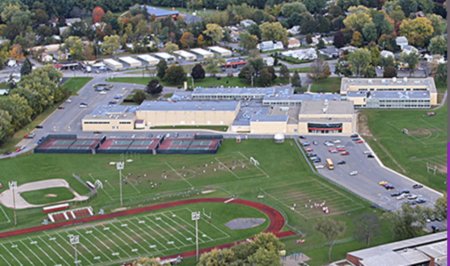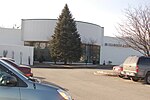Scotia-Glenville High School
1959 establishments in New York (state)Educational institutions established in 1959Public high schools in New York (state)Schools in Schenectady County, New York

Scotia-Glenville High School is a public high school in Scotia, New York, United States. It is the only high school operated by the Scotia-Glenville Central School District. The school is located in a large suburb of the city of Schenectady, New York. The school's athletic mascot is the "Tartan," depicted as a Scottish bag-piper.
Excerpt from the Wikipedia article Scotia-Glenville High School (License: CC BY-SA 3.0, Authors, Images).Scotia-Glenville High School
Capital Boulevard,
Geographical coordinates (GPS) Address Nearby Places Show on map
Geographical coordinates (GPS)
| Latitude | Longitude |
|---|---|
| N 42.8359 ° | E -73.9732 ° |
Address
Scotia-Glenville CSD
Capital Boulevard
12302
New York, United States
Open on Google Maps








